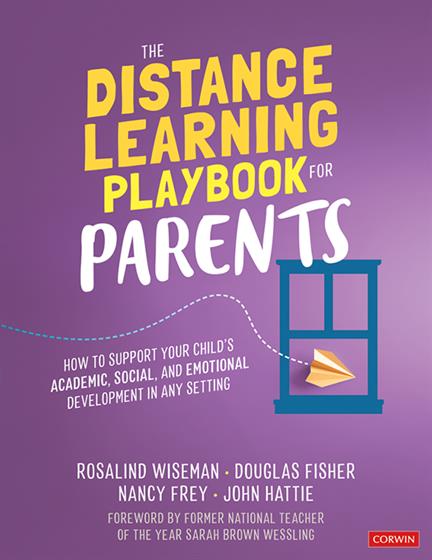Foreword
Letter From the Authors
Acknowledgments
How to Use This Book
Hold Up! Please Read This!
Distance, Remote, and Blended Learning
1. THE BASICS
Establish Routines
Create a Learning Environment
Learn the Learning Management System
Follow Zoom Etiquette
Ensure That Your Children Sleep
Monitor Screen Time
Communicate With Teachers
Take Care of Yourself
2. THE VALUE OF . . .
The Value of Reading Volume
The Value of Reading Widely
The Value of Reading Aloud
The Value of Vocabulary Games
The Value of Oral Language Development
The Value of Foundational Reading Skills: Phonemic Awareness
The Value of Foundational Reading Skills: Alphabetics and Phonics
The Value of Foundational Reading Skills: Fluency
The Value of Writing Across the Day
The Value of Scaffolded Writing Experiences
The Value of Mathematics Across the Day
The Value of Supplemental Mathematics Instruction
The Value of Arts and Music
The Value of Guiding, Not Telling
The Value of Wait Time
The Value of Practice
3. THE PRINCIPLES OF WELL-BEING
Social Emotional Learning Is Not Just Soft Skills
Happiness
The Power of Dignity
Separating Dignity From Respect
Putting Principles Into Action
Understanding Emotional Regulation
Emotional Granularity
Anxiety
Self-Compassion
Managing Conflicts
Friendships in COVID-19
Teasing: It’s Complicated
Bullying
Communication With Other Parents
Pod Teaching: Learning Pods
4. THE MINDFRAMES
MINDFRAMES FOR STUDENTS
Student Mindframe 1: Know your current level of understanding.
Student Mindframe 2: Know where you are going and have the confidence to take on the challenge.
Student Mindframe 3: Select tools to guide your learning.
Student Mindframe 4: Seek feedback and recognize that errors are opportunities to learn.
Student Mindframe 5: Monitor your progress and adjust your learning.
Student Mindframe 6: Recognize your learning and teach others.
THE 10 MINDFRAMES FOR FAMILIES
Family Mindframe 1: I am an evaluator of my impact on my children’s learning.
Family Mindframe 2: I see the power of collaborating with others in parenting our children.
Family Mindframe 3: I value what my child brings to the family and world.
Family Mindframe 4: I understand the centrality of my child.
Family Mindframe 5: I have appropriately high expectations.
Family Mindframe 6: I listen, build trust, and know how to gradually release responsibility.
Family Mindframe 7: I know the balancing act between developing autonomy, relatedness, and competence.
Family Mindframe 8: I appreciate the power of feedback and the place for praise as well as errors.
Family Mindframe 9: I know how to work with the school.
Family Mindframe 10: I am a parent, not a schoolteacher.
References
Index
About the Authors






